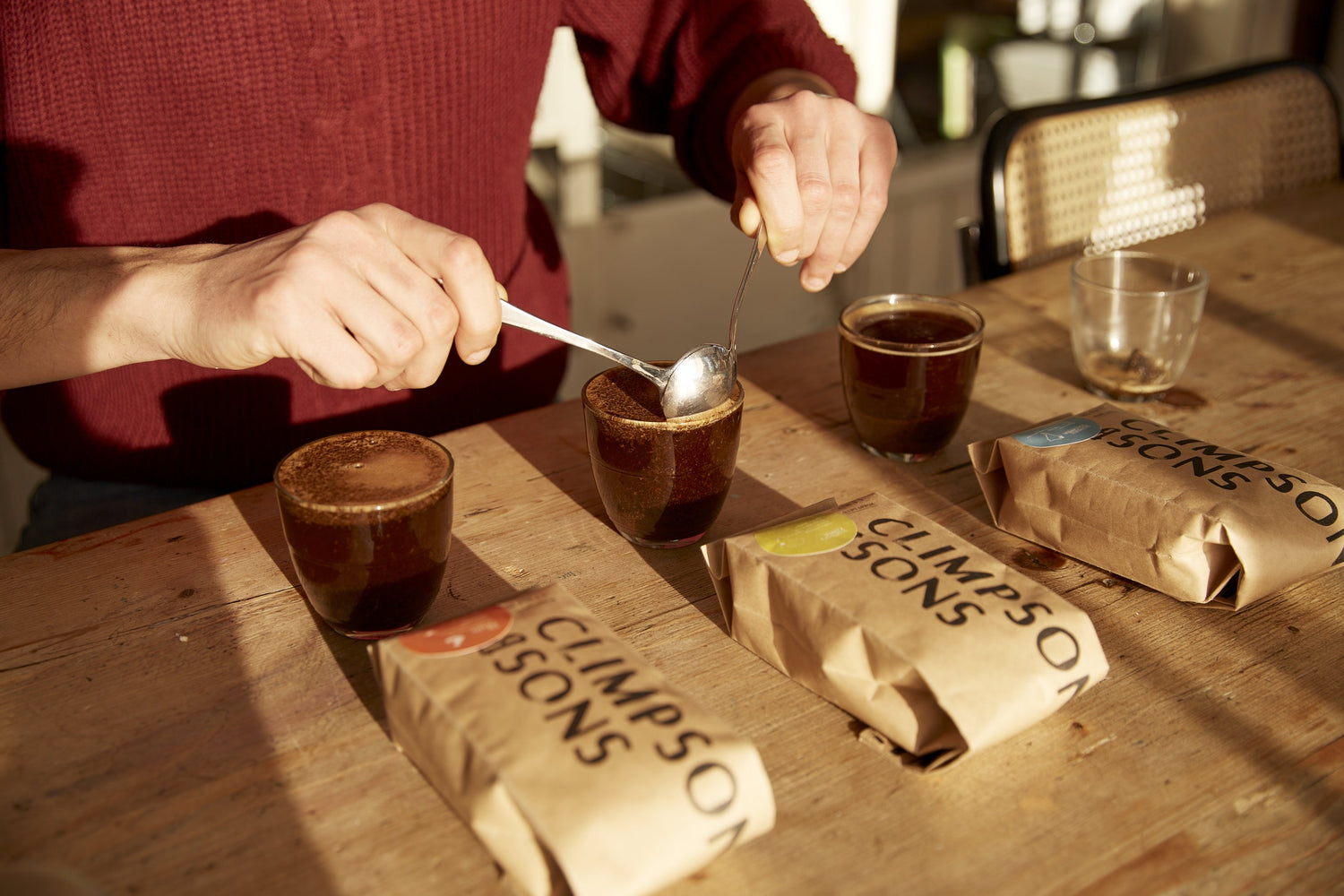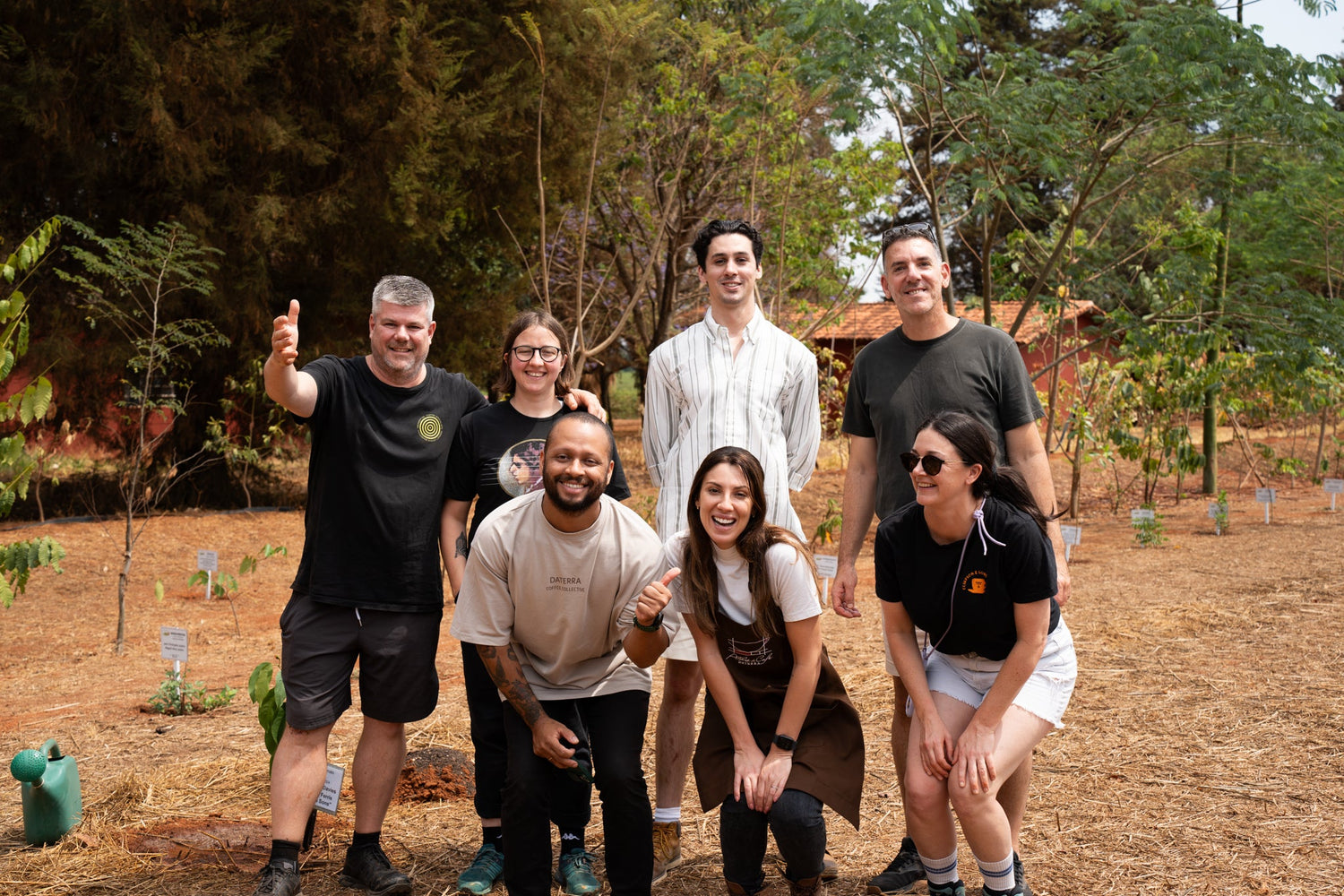Would you be able to describe the best coffee you’ve ever had? Maybe it’s because coffee has been around for centuries, it’s easy to overlook the complexities in a good cup of coffee. After all, coffee tastes like… coffee, right?
In this journal entry, we’ll provide an introduction to tasting coffee and break down what makes our taste buds go ‘parteeeeeey’.
Apples Vs. Oranges
Just like it’s not really helpful to compare apples and oranges (just, bare with us), it doesn’t really make sense to compare coffees made from different brew methods. Each brew method — espresso, cafetiere, filter, Aeropress — has its own strengths and weaknesses. To stretch this dubious comparison further, in order to taste coffee you will want to ditch sugar and milk as you wouldn’t want to compare a toffee covered apple with a plain apple — the sweetness of the toffee is going overpower the apple taste. What we’re looking to do is to compare like for like, or apples with other varieties of apples so that we can appreciate the differences in taste with all other things being equal.
The best way to taste or evaluate a coffee is through cuppings, as it’s the best way to eliminate barista or brewing errors. This is done regularly in the industry as part of the buying process, for quality control and evaluating taste. Cuppings are not entirely difficult to set up but you do need some coffee equipment and time — you can always avoid all this hassle by joining in a cupping at our roastery, or grab one of our home cupping boxes.
A more practical way of tasting coffees and sharpening your tasting skills is getting into the habit of drinking espressos or filter coffee — no milk, no sugar. Depending on where you are in your coffee journey you may find the taste overwhelming at first, but it will be worth it over time once your taste buds adjust. Many coffee shops have more than one espresso offering and a filter option, making it easy to contrast and compare over time. An added bonus is that a cafe or roaster will provide information on the coffee including tasting notes, which you can use as a guide.
Another way to train your palate is to explore the tastes contained within the flavour wheel and create a mental reference of individual flavours or flavour groups - nuts, spices, fruit, and floral. There’s nothing like getting acquainted with the flavours you are meant to be tasting. A great place to start is to track down a Kenyan coffee against a Central American coffee. A Kenyan coffee is remarkably different in taste and complexity, the fun part is then working out what it is that is different.
Breaking Taste
When it comes to flavour, there’s a lot happening in a cup of coffee, but if you don’t know what to look out for, the nuances and complexities can be overwhelming or masked by bold flavours. It helps to isolate the differences.
If we take the industry standard, the Specialty Coffee Association (SCA) cupping form as a rough guide, a cup is actually graded on more than 10 things. But let’s keep it simple and stick to 6 main characteristics to remember: flavour and aroma, acidity, sweetness, bitterness, body and mouthful, and aftertaste.
Flavour and Aroma - What do the aroma and flavours remind you of? Are you able to pick up notes of say, blackberries, dark chocolate, or orange?
Acidity - Is the acidity high and very noticeable, or does it have low acidity to barely noticeable acidity? Is it like acidity found in oranges (citric acid), apples and stone fruits (malic acid), grapes (tartaric acid). These are just some of the different types of acids out there, but the ones most often found in coffee. It’s worth keeping in mind that acidity is not a bad thing and in many cases helps provide a counterpoint to flavours and a good cup of coffee will have positive acidity of some kind.
Sweetness - Is there a natural sweetness or the opposite? Lack of sweetness?
Bitterness - Like acidity, bitterness is not necessarily unpleasant. Bitterness can be pleasant and complimentary, or ashy and unpleasant. Positive bitterness is always desirable in some brew methods, for instance, espresso.
Body and Mouthful - How does it feel on the palate, is it thin or light? Or does it have a heavy and full body? Is the mouthful velvety and smooth?
Aftertaste - After a sip, does the coffee leave a long lasting lingering finish in your mouth or is does it comes to an abrupt sharp finish.

When evaluating a coffee, think of the above and you’ll have a good map for things to look out for. Also, combining these are a good formula for describing coffees ie. ‘Rich, rounded and sweet …, with a flavour profile of clean dark chocolate, sweet nuttiness, and marzipan’
The Sweet Spot
One of the most valuable takeaways from all this is the ability to tell if a coffee is well made or not. For all of its complexities in flavours, a well-made coffee will be able to neatly balance flavours to deliver a pleasing experience with a longlasting finish.
There are a few that we definitely do not want and are the direct result of poor extraction. They are not only unpleasant, but the job of the brewer is to bring out the best of the coffee. To avoid going off track and delving too much into extraction theory, there are two flavours that are the telltale signs of a coffee that could be better made.
An unpleasant sourness that can be described as salty or acrid or the other end of the spectrum of undesirables would be, a bitter and ashy taste. Somewhere in the middle lies in the ‘sweetspot’ and where you will need to be if you want to taste the true properties of the coffee.
Side note: Contrary to popular belief, the tongue is not divided into separate taste regions where sour, salt and bitterness is picked up. According to many studies, the tongue is equally covered by different types of taste receptors: salt, sweet, sour, bitter and umami - not to be confused with unagi or salmon skin roll.
The Short of It
Your sensory coffee skills are something that you can work on over time (joy!) and are a fun way to get even more out of your everyday drinking experience. Another good way to practice is by wine tasting, so that's a win as well.
You will want to ditch the sugar and milk, and try espressos or filter coffees to get the full unaltered taste. When tasting, remember flavour and aroma, acidity, sweetness, bitterness, body and mouthful, and aftertaste.
And finally, the golden rule is to enjoy your coffee. This blog post is aimed at gaining a deeper appreciation for coffee and its subtilties — not ruining your favourite drink. It helps to approach each cup of coffee with an open mind and willingness to explore. When it comes to coffee there’s always something to learn. Our Home Imbrewvement course is a sensory training and coffee brewing workshop which is a great way to see all of the above in action.



